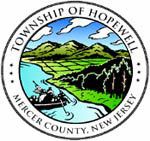By Frank Mustac, Contributor
Days after the state Supreme Court weighed in on affordable housing, the Hopewell Township Committee announced that they will be holding discussions on distributing low- and moderate-income units throughout the municipality and not just in the southern part of town., The high court voted unanimously on Jan. 18 in a decision that now requires New Jersey towns to take into account a “gap period” of about 16 years from 1999 to 2015 when calculating the number of affordable housing they must make available in order to meet their constitutional obligations., Chief Justice Stuart Rabner “did not participate in the decision,” said Hopewell Township Attorney Linda Galella at the Jan. 23 Township Committee meeting., “Essentially what is happening with the affordable housing now, we are waiting to get numbers on the third round,” Ms. Galella said. “The third round is from the period of 2015 to 2025.”, The numbers will be determined at the end of a legal trial that started earlier in January., Hopewell Township is one of five towns named in a collective known as the Mercer County Municipal Group, which has been before Superior Court Judge Mary Jacobson in a case to help determine the number of affordable housing units required in each town., The other four municipalities in the group are Princeton, East Windsor, West Windsor and Robbinsville., “What the Supreme Court said was that municipalities have an obligation to include the ‘gap period’ in the calculations,” Ms. Galella said. “What the ‘gap period’ is, is that period of time between 1999 and 2015 when COAH basically wasn’t able to promulgate regulations.”, COAH is an acronym for the Council on Affordable Housing, a state agency., “They (COAH) were essentially dysfunctional during that period of time,” she said. “The third-round number consists of three things: your prior round obligation…your present need, which has historically been defined by COAH and the courts as rehabilitation housing – housing that’s deficient with electricity, plumbing, those kinds of things., “The third thing that goes into your COAH calculation is your prospective need, and that projects into the future – what your housing needs are going to be in the future. You use census data, things like that, in order to calculate perspective need. You take that all together and you get your third round obligation.”, With the Supreme Court’s recent decision, Ms. Galella said she believed that the township should be getting its COAH requirement sooner, rather than later., “I don’t want to get too much into the numbers because the township is involved in litigation, and I don’t think it would be appropriate to discuss that,” she said. “From a practical prospective, I think the numbers are going to get recalculated by the experts, because now we have guidance from the New Jersey Supreme Court.”, Also, at the Jan. 23 committee meeting, Committeewoman Vanessa Sandom requested that the committee add a work session to a future meeting to “discuss where we believe affordable housing should be built in the township.”, She said she would like to include the two Bristol Myers Squibb (BMS) properties as possible locations for future affordable housing., Earlier this year, BMS announced that they were slowly shutting down their Hopewell Township campuses with the intent of fully vacating the premises by mid-2020., BMS has a primary facility on Pennington-Rocky Hill Road, which was formerly a Exxon/Mobil facility, and a facility on Carter Road, which had at one time been a Lexicon/ATT building. There are currently a combined 1,259 BMS employees both sites, but many of the those jobs would be moving to central New Jersey sites and Massachusetts., “BMS representatives have informed our administrator that they intend to put both campuses on the market, however specific discussions about the sites’ future have not yet been held,” Ms. Sandom said. “Hopewell Township collects approximately six percent of its annual tax revenue, or about $6 million, from the pharmaceutical company’s facilities. BMS is one of the top 10 taxpayers in the township.”, Ms. Sandom said the Pennington-Rocky Hill Road property would be a strong contender for potential affordable housing plans, since it “sits on 433 acres of developed and preserved land” and has access to public sewer and water. It has enough space, she said, that development would not hinder its open space qualities., “Over the years that I have served on the Township Committee and the Planning Board, I have been on record stating repeatedly that I do not believe all affordable housing should be constructed or planned for in the southern portion of the township,” she said. “I have heard many residents also state repeatedly at public meetings that they also believe affordable housing should be distributed throughout the township so that every portion of the township shares in this obligation.”, Ms. Sandom stressed the need for further discussion when it came to selecting where its affordable housing obligations should be located., “In my view, we should discuss adding it to the possible mix of sites which meet the court’s requirements for affordable housing so that more than one segment of the township share in the township’s affordable housing obligation,” she said., Committee members John Hart, Julie Blake and Kristin McLaughlin agreed that the issue brought up by Ms. Sandom deserved further discussion., “So, I think I’m hearing consensus that we will look (at) this to put it on one of our February agendas,” Mayor Kevin Kuchinski said., As a result, the committee will hold a discussion on the Supreme Court’s decision, as well as potential locations for future affordable housing units, during the Feb. 27 meeting.

